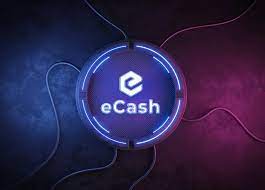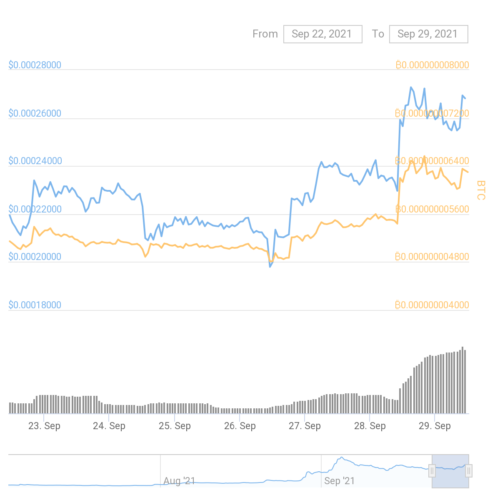ECash (XEC): What This Sub-Penny BTC Fork Promises

A new asset is gaining prominence, attempting to line up among the 30 largest coins by market capitalization. But this time, it is actually an old asset, or a fork of a fork of Bitcoin.
Bitcoin Cash ABC was created after a disagreement between Bitcoin Cash developers on the details of implementing a node. A chain split on November 14, 2020, produced the classic BCH, as well as a new asset based on the vision of the ABC developer team. Amaury Sechet, former lead developer for BCH, is now the public face of the XEC project.
ECash (XEC) is on track to make its first full year as a separate asset. Since its launch, the asset was re-denominated in a 1:1M ratio, turning it from a price copy of Bitcoin Cash (BCH) into a sub-penny digital coin. The asset performed the split and rebranding on July 1, 2021, and exchanges are still catching up with the new ticker.

XEC trades at relatively low volumes under $500M in 24 hours, with an absolute record in May above $1.5B in 24 hours. As such, XEC is a less liquid coin with the potential for high volatility and deep corrections.
XEC Offers Growth Opportunity
As the prominence of XEC grows, its price is starting to gain new ground. XEC traded at $0.0002501 on Wednesday and has 1,000% net gains in the past year. Still, XEC has not set a new record above its $0.0003600 range achieved in May.
The asset has managed to line up among top gainers, with the potential of rapidly shifting prices based on a highly liquid Binance trading pair.
The relatively low per-unit price may attract buyers for this rebranded asset. Binance trading remains the biggest driver of adoption, as the exchange was among the first to distribute XEC after November 18, 2020, shortly after the Bitcoin Cash network forked again.
Fork Wars Fought Over Consensus
The efficiency of blockchain communication has always created conflicts. Bitcoin, which uses the Nakamoto consensus between nodes, somehow manages to broadcast transaction between around 10,000 anonymous node operators.
Bitcoin Cash (BCH) wanted to make that network more efficient, thus creating one of the first BTC hard forks. However, the development direction of BCH was also met with internal disagreement.
This led to the creation of Bitcoin SV (BSV), which set its solution as having a few known node operators that could coordinate and propagate very large blocks.
XEC takes the consensus question one step further, using the Avalanche technology. With that approach, there is a second-layer solution for the consensus, which is faster compared to communication between nodes. XEC hopes the faster transaction speed can help it become the go-to solution for electronic cash.
The XEC network produces a block in under five minutes, which may be a short-term anomaly as the project has preserved the characteristics of BCH and BTC. The usual block time for those assets, without accelerated mining, is 10 minutes.
Is XEC Risky
More than 50% of all XEC activity is concentrated on the Binance exchange, based on pairings with Tether (USDT) and Binance USD (BUSD). This arrangement means XEC can outperform on some occasions, due to a pump concentrated on a single exchange.
Owning XEC also requires a different type of wallet, which only supports this asset. Downloading variants of the Electrum wallet may be risky due to attacks with faulty wallet software.
So far, XEC shares little information on mining and nodes, and little is known about its network security. A second-layer consensus may add more safety and make attacks more difficult.
XEC has the advantage of being present on most exchanges, due to the fact that forked coins are available immediately to those that have pre-fork balances.
Can XEC Move Higher
XEC has opened the opportunity for buying an asset with a very low per-unit price, possibly chasing growth of 10 or 100 times. A pre-split price would be equivalent to around $250, a price range often visited by BCH and BSV.
Lifting XEC to just $0.01 would require a 400X growth, to bring the asset to the equivalent of around $10,000. No fork of BTC has visited those price levels. However, a low per-unit price may open the opportunity for more significant price jumps.
Bitcoin Forks Stagnate
Despite some dramatic price moves in the past, BTC hard forks have mostly stagnated. BCH hovers around $489.01, while BSV is at $128.17.
Bitcoin Gold (BTG) also hovers around its usual level of $54. As interest shifted to Ethereum and tokens, those hard forks are becoming more obscure. Still, BTC forks can be a bonus for miners, who can add their machines to one of the alternative networks.
Tokenized BTC Takes Over
The initial intention of hard forks was to solve the problem of cumbersome BTC transactions with high fees.
With the rise in DeFi, tokenization solved that problem. Both WrappedBTC (WBTC) and Bitcoin BEP2 (BTCB) work to deliver the value of BTC in a format suitable for DeFi pools and collaterals.
WBTC can move through the Ethereum network, and BTCB is the dedicated token on Binance. So far, the token has replaced 112,501 BTC, locking up that value on the Binance Smart Chain.

Uphold makes buying crypto with popular currencies like USD, EUR and GBP very simple with its convenient options to swap between crypto, fiat, equities, and precious metals.

With over 50 coins and an obsession with security, Kraken is one of the safest places to buy and trade crypto.

Kraken has a good reputation for security and protection of your funds and operates across the USA (except NY), Canada, the EU and Japan

Based in Charleston, South Carolina. Serves over 184 countries and has done over $4 billion in transactions. Offers convenient options to swap between crypto, fiat, equities, and precious metals.

In Part 1 of the guide we look at the stochastic oscillator, relative strength index and moving averages

A review of the many options for crypto exchanges and what the main differences are

The leader in programmable money, smart contracts and decentralised applications. There have been many copycats but none have the community and level of adoption.

IOTA is a feeless crypto using a DAG rather than a blockchain. It aims to be the currency of the Internet of things and a machine economy.